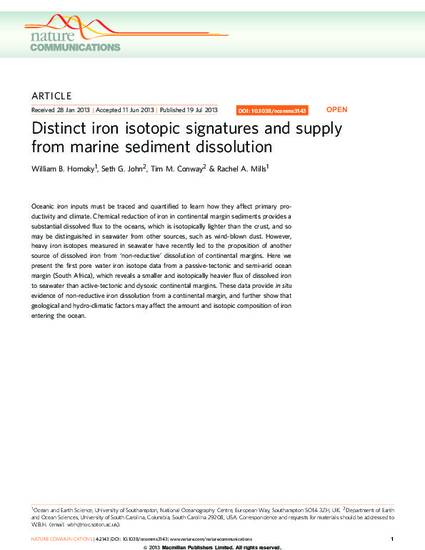
Oceanic iron inputs must be traced and quantified to learn how they affect primary productivity and climate. Chemical reduction of iron in continental margin sediments provides a substantial dissolved flux to the oceans, which is isotopically lighter than the crust, and so may be distinguished in seawater from other sources, such as wind-blown dust. However, heavy iron isotopes measured in seawater have recently led to the proposition of another source of dissolved iron from ‘non-reductive’ dissolution of continental margins. Here we present the first pore water iron isotope data from a passive-tectonic and semi-arid ocean margin (South Africa), which reveals a smaller and isotopically heavier flux of dissolved iron to seawater than active-tectonic and dysoxic continental margins. These data provide in situ evidence of non-reductive iron dissolution from a continental margin, and further show that geological and hydro-climatic factors may affect the amount and isotopic composition of iron entering the ocean.
Nature Communications, v. 4, art. 2143
Available at: http://works.bepress.com/tim-conway/3/
